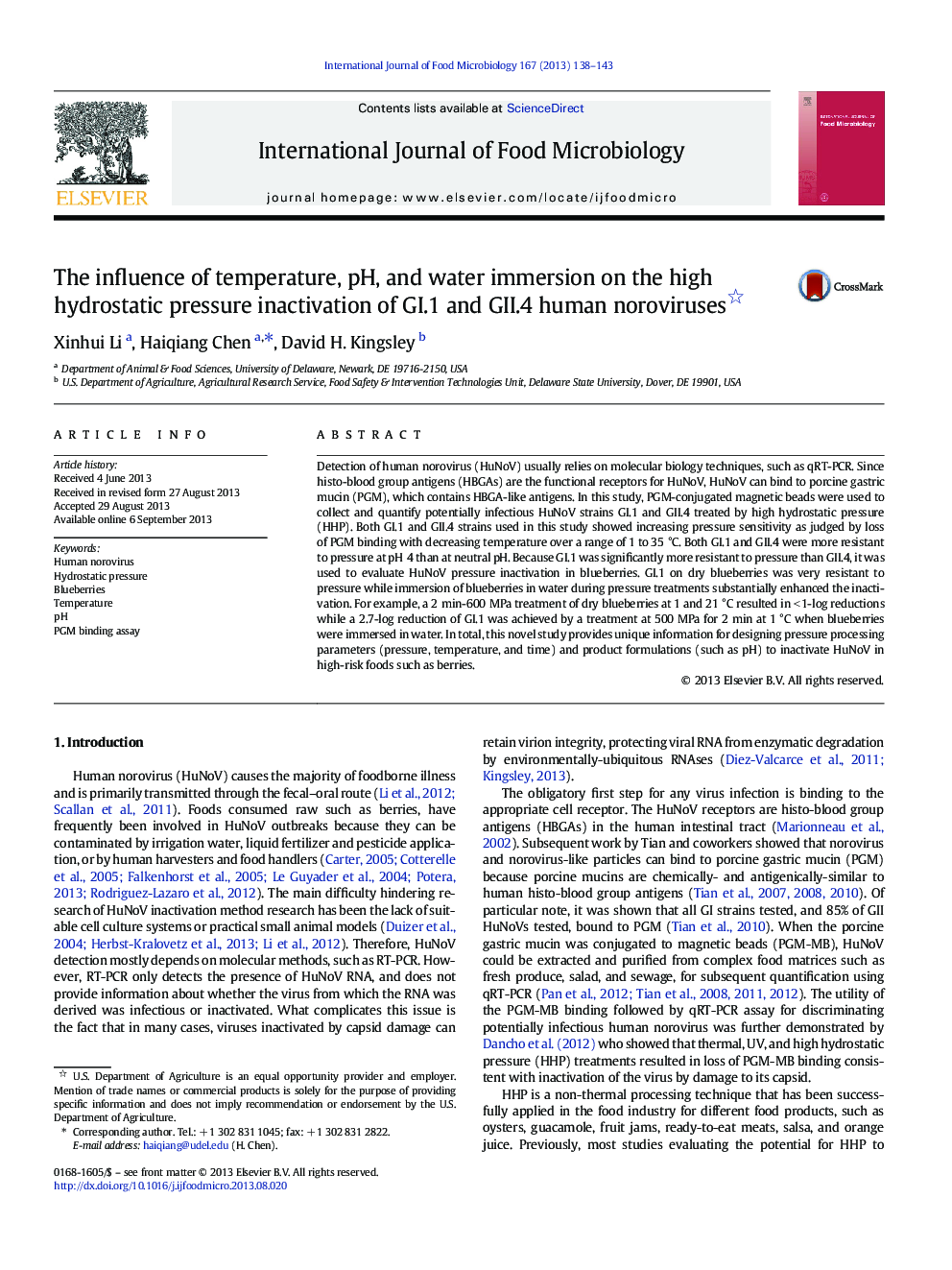| کد مقاله | کد نشریه | سال انتشار | مقاله انگلیسی | نسخه تمام متن |
|---|---|---|---|---|
| 4367117 | 1616615 | 2013 | 6 صفحه PDF | دانلود رایگان |

• Both GI.1 and GII.4 strains showed increasing pressure sensitivity as sample temperature decreased.
• Both GI.1 and GII.4 strains were more resistant to pressure at pH 4 than at neutral pH.
• The GI.1 strain was more resistant to pressure than the GII.4 strain.
• Presence of water greatly enhanced pressure inactivation of the GI.1 strain.
Detection of human norovirus (HuNoV) usually relies on molecular biology techniques, such as qRT-PCR. Since histo-blood group antigens (HBGAs) are the functional receptors for HuNoV, HuNoV can bind to porcine gastric mucin (PGM), which contains HBGA-like antigens. In this study, PGM-conjugated magnetic beads were used to collect and quantify potentially infectious HuNoV strains GI.1 and GII.4 treated by high hydrostatic pressure (HHP). Both GI.1 and GII.4 strains used in this study showed increasing pressure sensitivity as judged by loss of PGM binding with decreasing temperature over a range of 1 to 35 °C. Both GI.1 and GII.4 were more resistant to pressure at pH 4 than at neutral pH. Because GI.1 was significantly more resistant to pressure than GII.4, it was used to evaluate HuNoV pressure inactivation in blueberries. GI.1 on dry blueberries was very resistant to pressure while immersion of blueberries in water during pressure treatments substantially enhanced the inactivation. For example, a 2 min-600 MPa treatment of dry blueberries at 1 and 21 °C resulted in < 1-log reductions while a 2.7-log reduction of GI.1 was achieved by a treatment at 500 MPa for 2 min at 1 °C when blueberries were immersed in water. In total, this novel study provides unique information for designing pressure processing parameters (pressure, temperature, and time) and product formulations (such as pH) to inactivate HuNoV in high-risk foods such as berries.
Journal: International Journal of Food Microbiology - Volume 167, Issue 2, 15 October 2013, Pages 138–143